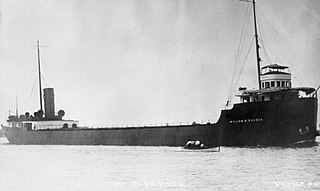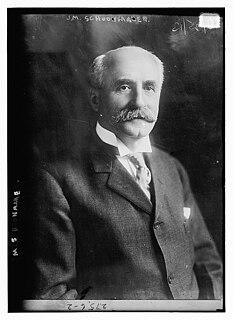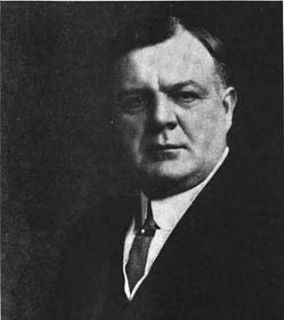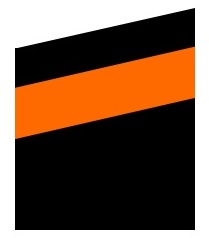
The SS William G. Mather is a retired Great Lakes bulk freighter now restored as a museum ship in Cleveland, Ohio, one of five in the Great Lakes region. She transported cargo such as ore, coal, stone, and grain to ports throughout the Great Lakes, and was nicknamed "The Ship That Built Cleveland" because Cleveland's steel mills were a frequent destination.

Lake freighters, or lakers, are bulk carrier vessels that operate on the Great Lakes of North America. These vessels are traditionally called boats, although classified as ships.
Windoc was the name of two Great Lakes freighters owned by Canadian shipping company N.M. Paterson & Sons Ltd., with the second ship named in memory of the first in 1986. Both ships suffered similar accidents with lift bridges on the Welland Canal.

The Great Lakes Engineering Works (GLEW) was a leading shipbuilding company with a shipyard in Ecorse, Michigan, that operated between 1902 and 1960. Within three years of its formation, it was building fifty percent of the tonnage of all ships in the Great Lakes. During World War II, GLEW was commissioned by Pittsburgh Steamship Company and the U.S. Maritime Commission to build twenty-one ore freighters. Its innovations included the first self-unloader freighter, SS Wyandotte. GLEW is best known for its construction of the SS Edmund Fitzgerald.

The SS William B. Davock was a lake freighter that was constructed in 1907 by Great Lakes Engineering Works, at their St. Clair, Michigan facility for the Vulcan Steamship Co.. She was operated by Vulcan Steamship from 1907 to 1915 in the Great Lakes coal, iron ore, grain and stone trades. In 1915 the ship came under the management of the Interlake Steamship Co.. While laid up for the winter (1922–23) in Fairport, Ohio, she was reconstructed and updated; this work changed her tonnage to 4220 gross and 2671 net. The Davock resumed its traditional trade pattern of coal carried to ports in the upper lakes from Lake Erie and iron ore carried from Lake Superior ports to the steel mills of Lake Erie and Lake Michigan.

The SS Superior City was considered a pioneer vessel at her launching in 1898. She was the largest vessel ever built on freshwater at that time. She sailed the Great Lakes for twenty-two years until she sank after a collision in 1920 with the steamer Willis L. King in Whitefish Bay of Lake Superior that resulted in the loss of 29 lives. Controversy was immediate over the collision. It was subsequently ruled that the captains of both ships failed to follow the “rules-of-the-road”. Controversy started again in 1988 when the Great Lakes Shipwreck Historical Society produced a video called "Graveyard of the Great Lakes" that included extensive footage of the skeletons of the Superior City crew. The controversy continued as late as 1996 over artifacts removed from her wreck. She is now a protected shipwreck in the Whitefish Point Underwater Preserve.

James Martinus Schoonmaker, Sr. , was a German American Colonel in the Union Army in the American Civil War and a vice-president of the Pittsburgh and Lake Erie Railroad. He received the Medal of Honor for gallantry at the Third Battle of Winchester on September 19, 1864.

MV Paul R. Tregurtha is a Great Lakes-based bulk carrier freighter. She is the current Queen of the Lakes, an unofficial but widely recognized title given to the longest vessel active on the Great Lakes. Launched as MV William J. De Lancey, she was the last of the thirteen "thousand footers" to enter service on the Great Lakes, and was also the last Great Lakes vessel built at the American Ship Building Company yard in Lorain, Ohio. The MV Paul R. Tregurtha is the current flagship for the Interlake Steamship Company.

The SS St. Marys Challenger is a freight-carrying vessel operating on the North American Great Lakes built in 1906. Originally an ore boat, she spent most of her career as a cement carrier when much larger ore boats became common. After a 107-year-long working career as a self-propelled boat, she was converted into a barge and paired with the tug Prentiss Brown as an articulated tug-barge. Before conversion, she was the oldest operating self-propelled lake freighter on the Great Lakes, as well as being one of the last freight-carrying vessels on the Great Lakes to be powered by steam engines.

The National Museum of the Great Lakes is a museum in the Toledo Maritime Center, a heritage location on the banks of the Maumee River on the east side of Toledo, Ohio. Operated by the Great Lakes Historical Society, it celebrates the natural and built heritage of the North American Great Lakes from a U.S. perspective. The museum is most noted as the docking location of a museum Lake freighter, the SS Col. James M. Schoonmaker.

Harry Coulby was a British American businessman known as the "Czar of the Great Lakes" for his expertise in managing the Great Lakes shipping fleet of Pickands Mather & Company. and the Pittsburgh Steamship Company. After retiring, he served as the first mayor of the newly incorporated town of Wickliffe, Ohio. His former home, Coulallenby, now serves as the city hall of Wickliffe. He chose the design for Great Lakes ore carriers in 1905 that became the standard for the next 65 years, and was elected to the National Maritime Hall of Fame in 1984.
The Pickands Mather Group is an American company which provides shipping of coal and other bulk commodities, and the purchase, sale, and marketing of bulk coal. Founded in 1883 as Pickands Mather & Company, it once had the second largest shipping fleet on the Great Lakes in the 1910s and 1920s. The company was purchased by the Diamond Shamrock Corporation in 1968, which in turn sold it to the Moore-McCormack Resources in 1973. Moore-McCormack sold Pickands Mather's mining interests to Cleveland-Cliffs in 1986. Moore-McCormack then spun off the Interlake Steamship Company to James Barker and Paul R. Tregurtha in 1987. Pickands Mather was sold to a management group in 1992, and continues to operate as a private company.

MV James R. Barker is an American bulk carrier that operates on the upper four North American Great Lakes. Built in 1976 by the American Ship Building Company at Lorain, Ohio, the ship is 1,004 feet (306 m) long, 50 feet (15 m) high and 105 feet (32 m) wide. Like the MV Mesabi Miner, a ship of the same design, it is owned and operated by the Interlake Steamship Company and was named for Interlake’s Chairman of the Board, James R. Barker.

The Interlake Steamship Company is an American freight ship company that operates a fleet on the Great Lakes in North America. It is now part of Interlake Maritime Services.

SS Willis L. King was a 600-foot-long (180 m), steel-hulled, propeller-driven American Great Lakes freighter built in 1911 by the Great Lakes Engineering Works of Ecorse, Michigan. She was scrapped in 1984 in Ashtabula, Ohio. Willis L. King is best known for her collision with the steamer Superior City on August 20, 1920, in Whitefish Bay.

The M/V Kaye E. Barker is a self-discharging lake freighter owned and operated by the Interlake Steamship Company. She was originally built as the SS. Edward B. Greene, and was later renamed SS. Benson Ford III before being sold to Interlake and named the M/V Kaye E. Barker. It primarily hauls hematite pellets, stone, and coal across the North American Great Lakes.
Interlake Maritime Services is an American shipping firm that was created in December 2020 after Interlake Steamship Company purchased the assets of Pere Marquette Shipping Company and Lake Michigan Car Ferry Company, including the car ferry SS Badger, MT Undaunted, ATB Pere Marquette 41, SS Spartan, and MG Winfield Scott (LT-805). Its corporate headquarters is located in Middleburg Heights, a suburb of Cleveland, Ohio, with additional regional offices in Duluth, Minnesota, and Ludington, Michigan.

MV Mark W. Barker is a large diesel-powered lake freighter owned and operated by the Interlake Steamship Company. She is the first of the River-class freighters constructed for an American shipping company. MV Mark W. Barker is the first ship on the Great Lakes to be powered with engines that meet EPA Tier 4 standards.

















